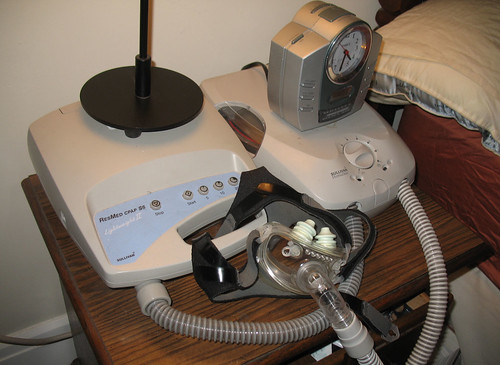By Mark Etinger
Although useful in sleep apnea therapy, CPAP air from sleep apnea machines is actually an irritant. The increased airflow from Respironics CPAP machines and other brands affects everyone differently - some patients may experience bleeding and irritation that can lead to infection, while others are more prone to excess mucous, which can lead to sneezing and congestion. Some patients' irritation may accumulate from extended use, while other new patients might react poorly to CPAP air from their first couple of treatments.
For sleep apnea patients, humidification is the best option to cut down on irritation and avoid these symptoms.
Just like CPAP machines, humidifiers come in all shapes and sizes - some are attached directly to sleep apnea masks or machines, while others are intended to stand on their own. Here are some of the different types of humidifiers:
Heated humidifier: As the name suggests, a heated humidifier relies on heat to create moisture. These machines typically have several heat settings so patients can customize the amount of moisture they wish to receive. Heated humidifiers are considered very effective and typically have small, convenient water chambers.
Passover humidifier: Unlike heated humidifiers, passover humidifiers are freestanding water chambers that can be added to the path of your sleep apnea machine. Typically, air will originate in the CPAP machine, pass through a hose to the humidifier, and then continue through another, longer hose to your Respironics CPAP mask. Moisture is added to the CPAP air as it passes over the humidifier chamber.
Passover humidifiers typically work best with low pressure CPAP machines and are often prescribed to new sleep apnea patients. These humidifiers can work wonders for some patients, but for others they are simply not enough. In passover humidifiers, there is no way to customize the amount of moisture received, and they produce less moisture when operating at colder temperatures. Patients can turn their heated humidifiers into passive humidifiers by turning off the heat.
Integrated humidifier: Integrated humidifiers are designed to work as components of CPAP machines, which means patients only need a single hose and power cord, for added portability. Since these humidifiers are constructed for specific machines, patients need to replace them every time they switch machines. Also, some types of integrated humidifiers function as passover humidifiers, which restricts the amount of moisture created.
Built in humidifier: Built in humidifiers are permanent components of CPAP machines, creating a very compact setup. These can function as either heated or passover humidifiers. Patients who travel often may not enjoy built in humidifiers since they cannot be removed from CPAP machines, making the overall machine heavier than a machine without a humidifier. Also, since the CPAP and humidifier are a single unit, if there is a problem with any component, the entire machine will have to be repaired.
Stand alone humidifier: Stand alone humidifiers are separate units connected via hose to CPAP machines. These humidifiers feature large water chambers for optimum humidity, in addition to adjustable levels, however they are less compact than integrated or built in humidifiers and require a separate power cord.
Despite their differences, all humidifiers require simple maintenance. Most importantly, the tanks should be filled exclusively with distilled water, which will allow your humidifier to stay clean and safe for use. Distilled water evaporates without creating any mineral deposits - unlike tap water, which can cause white mineral buildup or mold to accumulate in your tank. If distilled water is not available, bottled water is an acceptable substitute, provided patients do not allow standing water to sit in the tank.
Besides that, all you have to do to keep your humidifier working well is to rinse out the chamber every morning.
If dryness in or around the nose continues to be a problem, patients should try facial moisturizer or saline nasal drops. Additionally, sometimes dryness is exasperated by certain other factors, such as sleeping with an open mouth. In these cases, doctors recommend special CPAP masks that cover both the nose and mouth. New masks take some getting used to, but after the adjustment period is over, patients will experience decreased nasal dryness and irritation.

At http://www.CPAPMART.com you'll be able to find the best sleep apnea machines, respironics CPAP, sleep apnea masks, respironics CPAP mask and accessories and sleep tight, all night.
Article Source: http://EzineArticles.com/?expert=Mark_Etinger
http://EzineArticles.com/?Humidifiers---Cut-Down-on-Irritation-From-Sleep-Apnea-Machines&id=3495409
